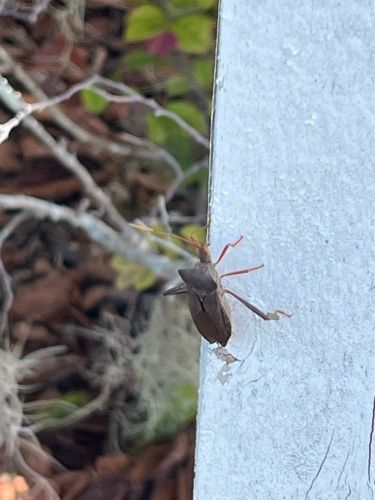Western Conifer Seed Bug
Scientific Name: Leptoglossus occidentalis
Order & Family: Hemiptera, Coreidae
Size: 16-20 mm (0.63-0.79 inches) in length

Natural Habitat
Coniferous forests, woodlands, and urban areas where conifers are present. Often found on pine, fir, and spruce trees, but will seek shelter in homes during colder months.
Diet & Feeding
Primarily herbivorous, feeding on the developing seeds and cones of various conifers by piercing them with their stylets and sucking out the fluids. They may also feed on sap from twigs and needles.
Behavior Patterns
Adults are active from late spring to fall. They lay eggs on conifer needles and stems. Nymphs develop through several instars, feeding on the host trees. In the fall, adults often aggregate and seek sheltered locations, including human dwellings, to overwinter. They are known to produce a strong, musky odor when disturbed.
Risks & Benefits
Potential risks include being a nuisance pest when they enter homes in large numbers during autumn, although they do not bite or cause structural damage. They can occasionally cause damage to conifer seed crops in forestry. Benefits include being part of the natural food web, serving as a food source for birds and other predators.
Identified on: 9/6/2025